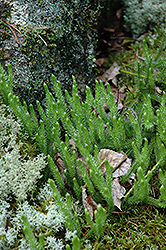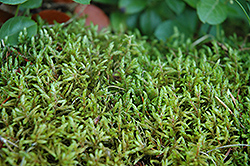It's all about ...
plants

Height: 4 inches
Spread: 12 inches
Sunlight:
![]()
![]()
Hardiness Zone: 1b
Other Names: Tufted Moss, Glow Moss
Description:
This moss naturally occurs in wet coniferous forests, swamps, fens, and is common in the Boreal forest; reddish fuzzy stems contrasting with yellow foliage, this variety makes a great accent pondside or in wet shaded areas
Ornamental Features
Ribbed Bog Moss' narrow leaves emerge yellow in spring, turning chartreuse in colour throughout the season on a plant with a spreading habit of growth.
Landscape Attributes
Ribbed Bog Moss is a dense herbaceous perennial with a ground-hugging habit of growth. It brings an extremely fine and delicate texture to the garden composition and should be used to full effect.
This is a relatively low maintenance plant, and is best cleaned up in early spring before it resumes active growth for the season. Deer don't particularly care for this plant and will usually leave it alone in favor of tastier treats. It has no significant negative characteristics.
Ribbed Bog Moss is recommended for the following landscape applications;
- Mass Planting
- General Garden Use
- Container Planting
- Bog Gardens
Planting & Growing
Ribbed Bog Moss will grow to be only 4 inches tall at maturity, with a spread of 12 inches. Its foliage tends to remain low and dense right to the ground. It grows at a medium rate, and tends to be biennial, meaning that it puts on vegetative growth the first year, flowers the second, and then dies. As an herbaceous perennial, this plant will usually die back to the crown each winter, and will regrow from the base each spring. Be careful not to disturb the crown in late winter when it may not be readily seen!
This plant does best in partial shade to shade. It prefers to grow in moist to wet soil, and will even tolerate some standing water. It is not particular as to soil type or pH. It is somewhat tolerant of urban pollution. This species is native to parts of North America. It can be propagated by division.
Ribbed Bog Moss is a fine choice for the garden, but it is also a good selection for planting in outdoor pots and containers. Because of its spreading habit of growth, it is ideally suited for use as a 'spiller' in the 'spiller-thriller-filler' container combination; plant it near the edges where it can spill gracefully over the pot. Note that when growing plants in outdoor containers and baskets, they may require more frequent waterings than they would in the yard or garden. Be aware that in our climate, most plants cannot be expected to survive the winter if left in containers outdoors, and this plant is no exception. Contact our experts for more information on how to protect it over the winter months.

